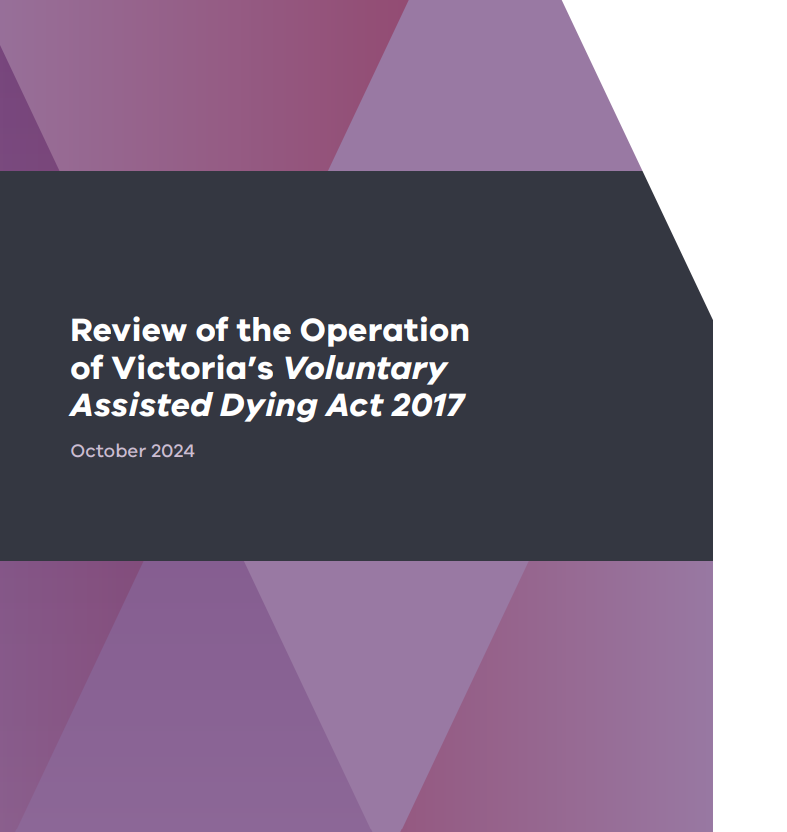VADANZ has welcomed the Victorian government’s plans to update the state’s voluntary assisted dying (VAD) laws to remove unnecessary barriers to access, including the so-called ‘gag clause’ that restricts doctors from discussing VAD with patients.
The proposed reforms aim to eliminate outdated residency requirements, standardise the eligibility time frame to 12 months, and ensure that healthcare professionals who object to VAD still provide patients with essential information about the process.
The Victorian government’s proposed reforms were announced after the five-year review of the Voluntary Assisted Dying Act 2017 was presented in parliament on February 20.
The state government’s updates will go to a conscience vote in 2025.
“VADANZ welcomes the reforms, especially the removal of the ‘gag clause’ and changes to residency requirements, which were highlighted in our submission to the review,’’ VADANZ president Dr Sally Cockburn said.
“The recommended changes are sensible and we congratulate the Victorian Health Minister for proposing an update of the VAD law to bring Victoria more in line with other states without weakening the law’s protection for patients. We hope South Australia and New Zealand will also review their gag clauses too as they are the last jurisdictions that prevent healthcare professionals initiating discussion about VAD.
“We urge all members of the Victorian parliament to support the proposed changes and VADANZ is happy to discuss any aspects with MPs.”
Victorian Government’s proposed changes
- Removing the ‘gag clause’ that prevents medical professionals from initiating discussions about VAD.
- Requiring objecting health practitioners to provide basic VAD information to patients.
- Revising residency criteria, including Australian citizenship and permanent residency requirements.
- Extending the prognosis requirement from six months to 12 months.
- Eliminating the need for a third assessment for patients with neurodegenerative conditions.
- Reducing wait times between the first and final VAD request.
- Simplifying permit change processes to prevent delays and give applicants more options for administration methods.
- Introducing exemptions to interpreter requirements.
- Removing forms from the legislation.
- Conducting further reviews of the law’s implementation and scope.
Victoria’s Health Minister Mary-Anne Thomas emphasised the importance of reforming the law to improve accessibility across the state.
“While our Australian-first voluntary assisted dying laws are giving Victorians the dignity of making their own decisions about the timing and manner of their death – we know we need to update them to ensure they remain fair.”
“Reforming our VAD laws to bring them in line with other states is critical to maintaining a service that is accessible to all Victorians, no matter where they live.”
Dr Cockburn also welcomed the findings of the five-year review, including recommendations for more support of the VAD workforce.
Review Findings and Recommendations
The five year review concluded that Victoria’s VAD system is safe and effective. However, it also highlighted that certain safeguards and procedures are making access more difficult, which could compromise patient-centered care.
The review noted that while Victoria was the first Australian state to introduce VAD, its model is now considered more restrictive compared to other states.
The review proposed several recommendations, including improving public awareness, enhancing education for individuals and families, and strengthening workforce support.
It recommended considering hospital based and visiting medical practitioners, and specialists and GPs located in regional areas.
The review also noted the importance of supporting the psychological safety and wellbeing of the VAD workforce, including options for support, communication and improved networking.

